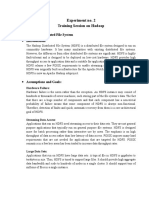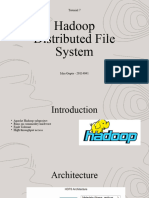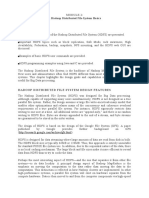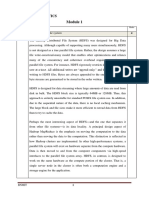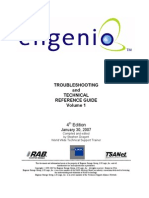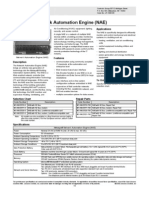0% found this document useful (0 votes)
10 views4 pagesHadoop Distributed File System
Hadoop Distributed File System (HDFS) is a distributed storage system that breaks files into blocks, managed by a master node called NameNode and slave nodes known as DataNodes. HDFS ensures data reliability through block replication across different nodes and incorporates features like rack awareness for fault tolerance. It offers benefits such as cost-effectiveness, large data set storage, fast recovery from failures, portability, and high data throughput for streaming access.
Uploaded by
Ishmael Garikai KutamburaCopyright
© © All Rights Reserved
We take content rights seriously. If you suspect this is your content, claim it here.
Available Formats
Download as DOCX, PDF, TXT or read online on Scribd
0% found this document useful (0 votes)
10 views4 pagesHadoop Distributed File System
Hadoop Distributed File System (HDFS) is a distributed storage system that breaks files into blocks, managed by a master node called NameNode and slave nodes known as DataNodes. HDFS ensures data reliability through block replication across different nodes and incorporates features like rack awareness for fault tolerance. It offers benefits such as cost-effectiveness, large data set storage, fast recovery from failures, portability, and high data throughput for streaming access.
Uploaded by
Ishmael Garikai KutamburaCopyright
© © All Rights Reserved
We take content rights seriously. If you suspect this is your content, claim it here.
Available Formats
Download as DOCX, PDF, TXT or read online on Scribd
/ 4



















